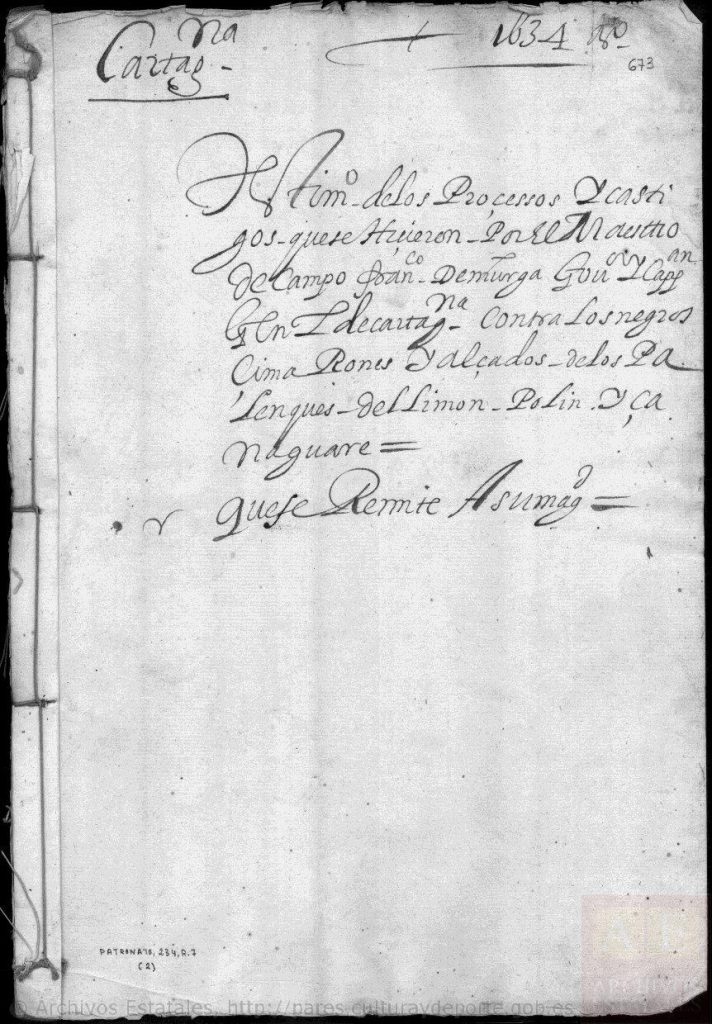
Open Mass commemorating Abolition of Slavery, May 17, 1888, Rio de Janeiro

Royal Palace, Rio de Janeiro, Proclamation of the Abolition of Slavery, May 13, 1888


2022 MOLAA AFRO-LATINX FESTIVALMonday, February 21, 202211:00 AMSunday, March 20, 20225:00 PMMuseum of Latin American Art628 Alamitos AvenueLong Beach, CA, 90802https://molaa.org/events/2022/2/21/afro-latinx-fest
Follow the link to see how the AG Simancas digitized a bunch of boxes on the “Negros Franceses,” on the mobility of Black men and women living in 1790s Saint Domingue who ended in places such as Cuba, Colombia, Venezuela, Panamá, Cadiz, Florida, and México. This is just one box, you can search “negros franceses” in PARES
http://pares.mcu.es/ParesBusquedas20/catalogo/show/1308193?nm&fbclid=IwAR1GaENFKMMdIgyTPDdn4CODhv8Vt0Su2PhJ_groYaz4uAx81cRs14_ucMY
Follow this link, https://gallica.bnf.fr/ark:/12148/bpt6k73763z/f18.item#,
to check Naturaleza, policia sagrada i profana, costumbres i ritos, disciplina i catechismo evangelico de todos Etiopes, por el P. Alonso de Sandoval

Here you can see the original file from 1634 where the testimonies of those captured in the Palenque de Limón, near Cartagena, were registered. Andrés Sacabuche translation for the declaration of Domingo Anchico and Sebastian Anchico are in 319-329.
Follow the Link: http://pares.mcu.es/ParesBusquedas20/catalogo/show/126365
Cartagena, 1634, Testimony of the Trials and Punishments Carried out by Field Marshall Francisco de Murga, Governor and Captain General of Cartagena, against the Rebel Black Maroons of the Palenques of Limón, Polín, and Zanaguare.”

In the readings of the next weeks you may find cited Alex Borucki, David Eltis, and David Wheat, “Atlantic History and the Slave Trade to Spanish America.” American Historical Review 120, 2 (2015): 433-461, which we wrote after both of us finished with our books, and put Dave’s findings and mine’s for a larger audience, which is also accesible in the SlaveVoyages website.
Some of Dave’s Wheat sources have been recently put online, for instance, this list of 656 departures of slave ships from Spain, accesible in the online website of the Spanish state archives. Some of the baptismal records mentioned in his last chapter are now available in thanks to the project Slave Societies Digital Archive.
Finally, the Archivo General de la Nación (Colombia) put online the entire section labeled “Blacks and Slaves”. See the “Pleito entre Juan de Meneses y Francisco Camargo sobre un negro esclavo y sus jornales,” 1608, AGN-FNE, Bolivar 6, which Dave Wheat analyzes in pp. 133-140 and other parts. (The entire website is here)
Here you can see the entire catalog listing the cover page of each file and where to find it in the website.
We did this panel in Nov. 2020, 500 years after the first known ship embarked captives in Africa to land them in the Americas (Puerto Rico).

WHAT DOES IT MEAN TO BE PROFESSIONAL?
What does it mean to be a professional historian? What is “professionalism” and why should you practice it when no one else does? Does punctuality pay?
PUTTING YOUR WORK IN CONTEXT.
Log on to the AHA website (historians.org) and go the Dissertation Directory under the “additional resources” tab. Choose Dissertations-In-Progress area and search 1) to see what kind of work is being done on the specific region, period and subject that interests you and 2) to see what kind of work is being done on the larger theoretical theme that interests you, but in a different place and period.
Browse either the table of contents of or, if you have time, the book reviews in the flagship journal in your field during the calendar years 1992 and 2004. Can you discern trends in what was published then and what is being published now?
How to Be Cutting-Edge without Being Trendy.
The Art of Criticism and Deference.
The elements of good scholarship (whether it’s a prospectus, a dissertation, or an article)
GRANTS
Read the Social Science Research Council’s advice “On the Art of Writing Proposals,” here.
PUBLISHING
Identify journals including: 1) what you would consider a good journal in your field (probably very specialized, articles may be more or less strong or well-written, potentially not peer-reviewed); 2) a strong journal in your field (definitely peer-reviewed; well-written and well-researched articles, but perhaps still specialized or with limited readership); 3) the flagship journal in your field (excellent, highly selective).
Look on your bookshelf and do a quick inventory of the kinds of books you really appreciate. Are they clustered around one, two or three academic presses? Visit the presses’ websites and check out what else they publish.
Should you publish now or later? Book reviews.
THE PROFESSION
Is being a college professor a hard job?
Multiple possibilities for the future.
Setting and meeting a personal timeline